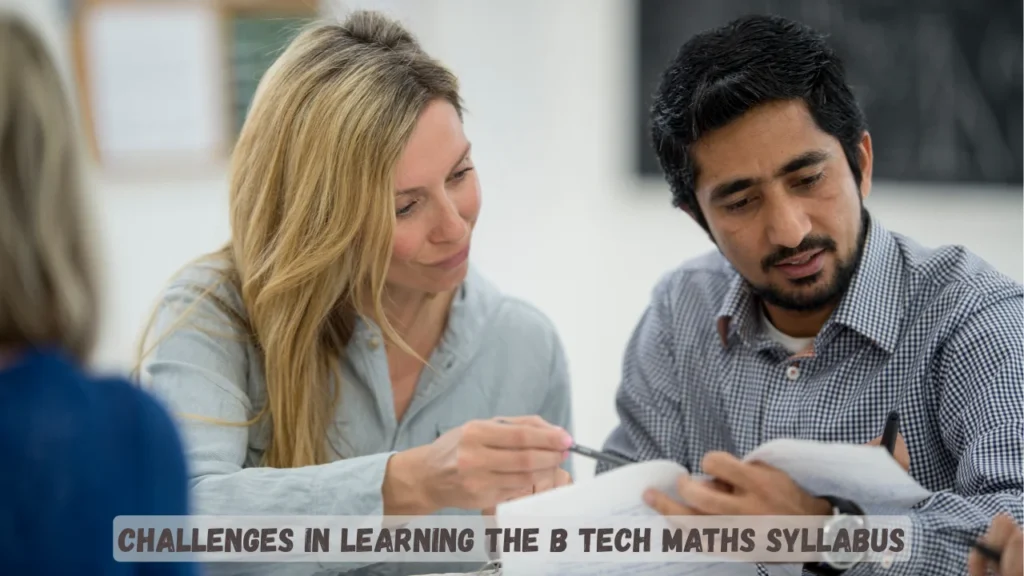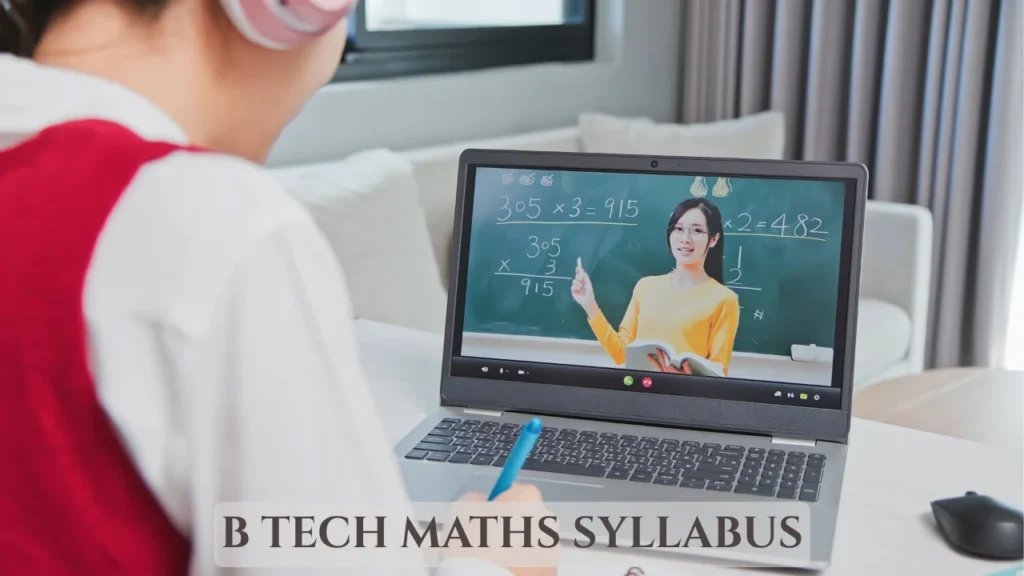Prabhavee Tech Park is a hub of innovation and learning, much like how mathematics forms the backbone of every engineering journey. For every BTech student, math is not just a subject—it’s a universal language that powers design, logic, and problem-solving. Understanding the b tech maths syllabus helps students prepare for challenges, connect theories to applications, and succeed in their careers. Let’s explore this syllabus in detail and see why it plays such a crucial role in shaping an engineer’s mind.
What is B Tech Maths Syllabus?
The B Tech Maths Syllabus is the structured framework of mathematics subjects taught throughout a Bachelor of Technology program. It forms the foundation for all engineering branches, helping students develop analytical, logical, and problem-solving skills. The syllabus generally includes topics like calculus, linear algebra, differential equations, vector calculus, probability, statistics, numerical methods, and optimization.
These subjects are taught semester by semester, starting with basic mathematical concepts in the first year and progressing toward advanced applications in later semesters. The b tech maths ensures that future engineers can apply mathematical reasoning to design, analyze, and innovate in real-world technological problems.
Why Mathematics Is the Foundation of Engineering
Every engineering discipline—from civil and mechanical to computer science and electronics—relies on mathematical reasoning. Math helps engineers understand system behavior, model solutions, and predict outcomes.
A well-planned b tech maths ensures that students can handle technical subjects like thermodynamics, control systems, and algorithms. It also develops precision and clarity in thought. The concepts of vectors, calculus, and matrices enable students to represent and analyze multidimensional data, essential in today’s world of technology.
Mathematics transforms raw ideas into measurable, testable, and efficient engineering designs. That’s why it remains a compulsory subject in all engineering branches.
Semester-Wise Overview of B Tech Maths
Every university divides the b tech maths across the semesters so students can gradually build their understanding. Here’s a general structure followed by most institutions:
| Semester | Course Name | Major Topics Covered |
|---|---|---|
| 1 | Engineering Mathematics I | Matrices, determinants, calculus, partial derivatives, Taylor series, vector algebra |
| 2 | Engineering Mathematics II | Differential equations, Laplace transforms, complex variables, Fourier series |
| 3 | Engineering Mathematics III | Partial differential equations, boundary value problems, heat and wave equations |
| 4 | Numerical Methods | Interpolation, numerical integration, finite differences, error analysis |
| 5 | Probability and Statistics | Random variables, distributions, expectation, variance, hypothesis testing |
| 6 | Optimization Techniques | Linear programming, simplex method, duality, convex optimization |
| 7 | Advanced Mathematics | Graph theory, control theory, and computational mathematics |
| 8 | Mathematical Modelling | Advanced electives and projects related to applied math |
This progression allows students to start with simple mathematical principles and move toward specialized topics that directly apply to their engineering disciplines.
First-Year Mathematics
The first year focuses on fundamental mathematics.
Engineering Mathematics I introduces calculus, matrices, and vector algebra. Students learn how to compute derivatives, evaluate multiple integrals, and solve systems of linear equations. These are essential tools used in physics and mechanics.
Engineering Mathematics II continues with topics like differential equations, Laplace transforms, and Fourier series. Students use these methods to analyze vibrations, circuits, and signals—bridging math with physical systems.
By the end of the first year, students have a strong foundation to handle advanced engineering problems logically and systematically.
Second-Year Mathematics
The second-year b tech maths emphasizes problem-solving and analytical applications. Topics like partial differential equations (PDEs) and vector calculus appear in this phase.
Students learn methods like separation of variables to solve equations that describe heat transfer or wave motion. The idea of vector calculus—gradient, divergence, and curl—connects math with electromagnetism, fluid mechanics, and other engineering systems.
This phase also introduces numerical methods. When equations can’t be solved by hand, numerical techniques provide approximate solutions, vital for programming and simulations.
Third-Year Mathematics
By the third year, students apply mathematical concepts to real engineering problems. The b tech maths here includes probability, statistics, and optimization techniques.
Probability theory helps model uncertain systems, such as traffic flow or network reliability. Statistics allows data interpretation, hypothesis testing, and regression analysis—skills in high demand in data-driven fields.
Optimization introduces linear programming and constraint satisfaction problems. Engineers use these techniques to minimize cost, reduce energy use, or maximize output. Concepts like duality and simplex method teach students structured decision-making.
This is also where universities often collaborate with research hubs like Mind Comp Tech Park, emphasizing the real-world application of mathematics in technology and innovation.
Final-Year Mathematics
The final year offers flexibility through elective subjects. Students can choose topics that align with their specialization—like computational mathematics, graph theory, cryptography, or control system analysis.
Some courses introduce computational labs using MATLAB, Python, or R. This gives students a hands-on understanding of how mathematical models operate in digital systems.
By integrating these electives into the b tech maths, universities prepare students for advanced studies, research, or technical careers where mathematical thinking is a must.
Key Topics Covered Across the Curriculum
Although subjects vary slightly between institutions, the core mathematical areas remain consistent. Here’s a quick look at some of the most important topics:
| Category | Major Topics | Applications |
|---|---|---|
| Calculus | Limits, derivatives, integration, multiple integrals | Mechanics, motion, optimization |
| Algebra | Matrices, eigenvalues, vectors | Robotics, machine learning, 3D modeling |
| Differential Equations | ODEs and PDEs | Circuits, vibrations, control systems |
| Probability & Statistics | Distributions, sampling, regression | Data analysis, quality control |
| Numerical Methods | Interpolation, approximation | Simulation, computational design |
| Optimization | Linear programming, convex optimization | Resource allocation, scheduling |
Each topic contributes to analytical, computational, and logical problem-solving—skills central to all branches of engineering.
Challenges in Learning the B Tech Maths Syllabus

Many students find the b tech maths challenging due to its abstract nature. The key issues include understanding theoretical proofs, connecting formulas to applications, and managing large workloads.
However, regular practice can make a huge difference. Solving diverse problem sets strengthens both speed and accuracy. Keeping a concept diary helps you remember core formulas and methods.
Students should focus on applying concepts rather than memorizing them. When you understand why a formula works, you can use it in any situation—whether in exams, projects, or real-world engineering tasks.
Tips for Mastering the Syllabus
- Practice daily: Mathematics requires consistent effort. Solving problems regularly enhances clarity and confidence.
- Understand concepts deeply: Don’t just memorize formulas; understand how and why they work.
- Use visual aids: Graphs, diagrams, and 3D models make abstract concepts tangible.
- Group study: Teaching others helps reinforce your own learning.
- Online resources: Platforms like NPTEL, Khan Academy, and YouTube simplify complex topics in interactive ways.
Learning math is like learning a new language. It may seem difficult at first, but once mastered, it opens countless opportunities.
Real-World Relevance of the B Tech Maths
The b tech maths is not limited to theory—it prepares students for practical engineering challenges.
For instance, a civil engineer uses integration to calculate load distribution. A computer engineer applies linear algebra in machine learning. An electrical engineer uses Fourier transforms in signal processing.
Mathematical skills also power modern fields like artificial intelligence, robotics, and data analytics. Understanding the underlying math gives you a competitive advantage in technical jobs and research roles.
Connection Between Mathematics and Innovation
Innovation begins with numbers. Whether designing a self-driving car or optimizing solar panels, engineers rely on mathematical principles. The b tech maths ensures students learn to translate abstract concepts into working solutions.
Mathematics also nurtures creativity. When students visualize functions, graphs, and models, they engage in both logic and imagination. That’s the power of combining art and science through numbers.
Institutions located in technology zones, similar to Prabhavee Tech Park, benefit from strong industry-academic collaboration. Students often work on mathematical modeling projects that solve industrial problems, bridging theory with practice.
Conclusion
Mathematics is the invisible engine that drives all engineering disciplines. The b tech maths syllabus gives students the logical tools to analyze, model, and design solutions for real-world problems. From calculus and algebra in the early semesters to optimization and probability in later years, each topic adds another piece to the engineer’s toolkit.
Success in engineering begins with understanding the mathematics that shapes it. By staying consistent, practicing regularly, and connecting theory with application, students can master every concept in the b tech maths. With this foundation, they’re ready to innovate, design, and build the future—proving that mathematics truly is the language of engineering.



